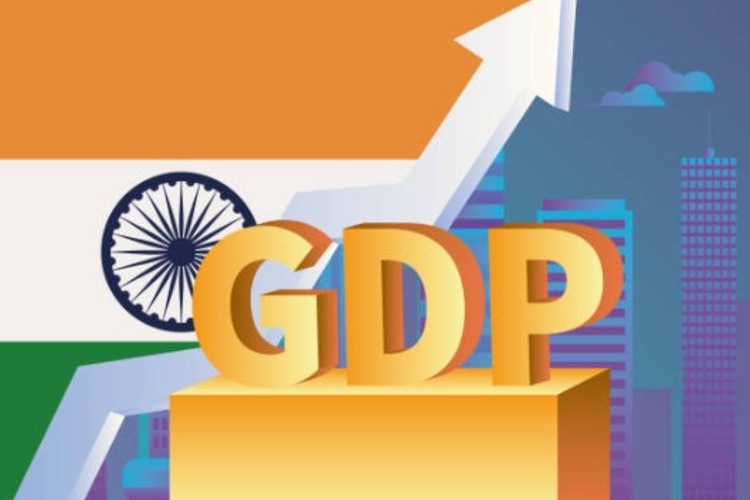
Q1 GDP growth: On July 31, President Donald Trump dismissed India with a barbed remark: “I don’t care what India does with Russia. They can take their dead economies together, for all I care.” The latest data show the opposite. Far from a “dead economy,” India delivered its strongest growth in five quarters, reminding the world of its resilience at a time when most large economies are slowing.
India’s GDP expanded by 7.8% in the April–June quarter of FY26, outpacing all forecasts. The Reserve Bank of India (RBI) had expected 6.5%, while the most optimistic forecast—from the State Bank of India—was 6.8–7%. The outcome cements India’s position as the fastest-growing large economy, well ahead of the United States (3.3%) and China (5.2%).
READ | Skilling India: Why Apprenticeship Act overhaul falls short
Growth was powered by both manufacturing and services. Public administration grew by 9.8%, financial services by 9.5%, and manufacturing reached a four-quarter high thanks to lower input costs. Agriculture, aided by a strong rabi season, grew at 3.7%, more than double last year’s pace. On the demand side, private consumption expanded by 7%, government spending by 7.4%, and investment by 7.8%. The strength of domestic demand stands out in a world grappling with weak consumption.
Temporary boost from tariff deadlines
Some of the acceleration, however, came from exporters rushing shipments ahead of Trump’s tariff deadline. This front-loading may fade in the second half of the year, when the full impact of the 50% tariffs on Indian exports takes hold. Analysts expect labour-intensive sectors—textiles, jewellery, and food processing—to be most affected. The tariffs could shave 0.2–0.4 percentage points off annual GDP growth, undermining the export engine that accounts for much of India’s manufacturing jobs.
The contrast with other advanced economies is stark. The United States, despite its $30 trillion economy, is constrained by high interest rates and a cooling labour market. Germany remains weighed down by high energy costs and shrinking industrial output. Japan, India’s closest rival in nominal GDP, managed only 2.5% growth. India’s momentum therefore looks even more impressive against this subdued backdrop.
Structural realities
Still, headline growth masks structural challenges. India’s per capita income of $2,934 in 2025 lags far behind Japan’s $33,955 and America’s $81,000. Its $4 trillion economy ranks fourth globally, but low per capita metrics highlight persistent inequality. Developed countries, though slower-growing, enjoy higher productivity and stronger welfare systems—advantages India has yet to build.
India’s headline GDP growth is striking, but other macroeconomic markers tell a more subdued story. Per capita income remains modest at under $3,000, investment-to-GDP ratios are below their historic highs, and employment growth has lagged output expansion. Exports have yet to recover their share of global trade, while credit offtake from the private sector shows uneven momentum. These gaps underline the dissonance between GDP performance and the broader health of the economy, reminding policymakers that high growth alone does not translate into widespread prosperity.
Policy tailwinds and risks
Policymakers are not leaving matters to chance. The RBI’s recent 100-basis-point rate cut, income tax relief, and plans for GST rationalisation could lift consumption, especially during the festive season. Madan Sabnavis of Bank of Baroda expects full-year growth to average 6.5%. Yet, risks remain. Aditi Nayar of ICRA warns that tariff-induced job losses could dent household sentiment and delay discretionary spending.
Micro, small, and medium enterprises—which generate 45% of India’s exports—face daunting challenges without a trade deal with Washington. Net exports were already negative in the first quarter and may become a larger drag on growth if tariffs persist.
India has shown once again that it is the outlier in a gloomy global economy. But sustaining momentum will require more than favourable comparisons. Continued investment in infrastructure, inclusive policies to spread gains across income groups, and deft trade diplomacy to blunt the tariff shock will be essential. For now, the growth story remains compelling, but it comes with caveats that policymakers cannot ignore.
